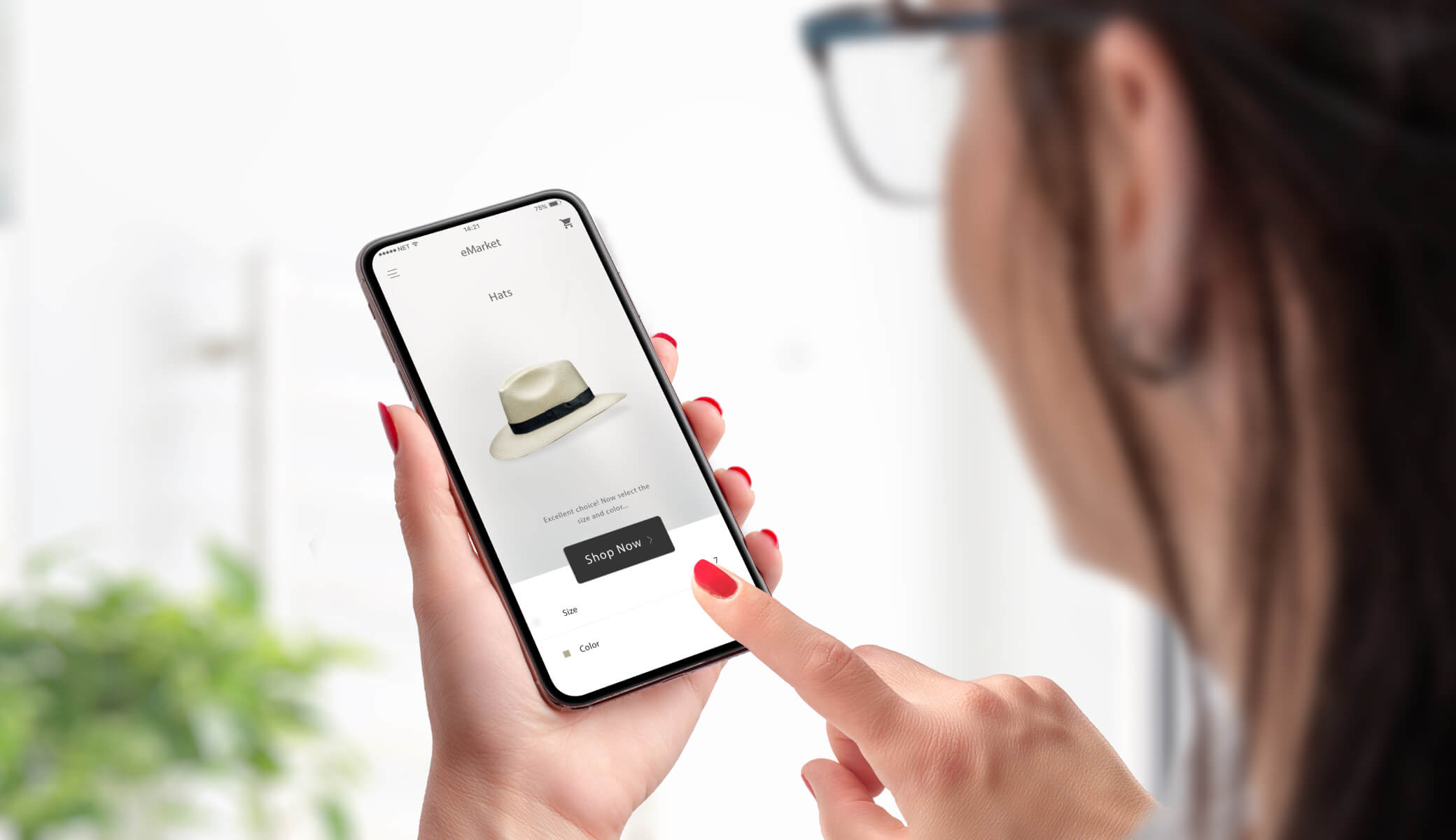Augmented Reality in Retail is one of the reasons why eCommerce has achieved such a remarkable success. It has given birth to AR try-on, the technology that allows users to try cosmetics, accessories, clothing and other products online, without visiting the actual brick-and-mortar store.
AR technology is set to become a more significant tool for retail companies. No matter how big your business is right now, if you don’t keep up with respective beauty trends influenced by AR, you’ll risk falling drastically behind.
To take your business to the next level in 2021, make sure to take full advantage of these 7 AR eCommerce trends.
Augmented Reality In Retail: 7 Trends You Need To Know
1. The Use Of AR For Virtual Try Ons
AR makes it possible to use virtual try ons to demonstrate to customers how their favourite products would look on their face or other parts of the body.
Take an example of the French cosmetics chain Sephora who is considered to be a pioneer in AR beauty. This company offers customers an opportunity to virtually try on various make-up products without having to leave their home. The technology will benefit retailers with faster purchasing decisions and decreasing product returns. In addition to that, the realistic presentation and almost haptic application of the products triggers a truly unique shopping experience.
Do you want to provide your customers with similar technology to give them confidence during the product purchasing process? Take a look at our Virtual Try On solutions. The software can be implemented in the desktop version of your site or a mobile app to ensure realistic items and product representation.

An overview of our Face AR SDK for virtual try on.
2. The Use Of AR For Virtual Product Launches
Even though in-person events are not possible in the current environment, AR technology can help retailers organize online presentations to unveil new products and create buzz around them. The use of virtual try-on and face filter technologies can help them carry out immersive and emotionally rich virtual events that are just as effective as offline experiences.
When comparing with the classical in-person events, AR event experience has several benefits. By taking advantage of interactive functionality integrated into the digital presentation layer, consumers can be active event participants rather than passive viewers. It also makes events more scalable, enabling a larger number of people from any location of the world to participate to experience the actual products. Last but not least, AR can be used to display the key product information in the most appealing and informative way.
The obvious benefit of Face AR technology for live events was demonstrated by the cosmetic company Estee Lauder which used livestream shopping and virtual try ons to increase their digital sales by up to 60% amid the pandemic.
3. The Emergence Of AR Mirrors
The AR mirrors help customers virtually try on and test different products such as clothes and makeup products without actually wearing them. The feature is often a decisive advantage for many companies because it significantly reduces physical contact with goods as well as the use of dressing rooms. The option to try out lots of versions and models in a short space of time or even check out products that aren’t currently available in-store also makes for a better and more personalized shopping experience.
An overview of how AR virtual mirror is being used by Timberland.
4. Introduction Of AR Gamification
The mixture of creativity coupled with Web AR technology can help a retail store easily turn its sales pitch into a game to promote their products offline. One great example of gamification in retail is Adidas’ ad campaign promoting their Ultraboost 19 sneakers. Once passengers step on board of the train, special ads invite them to scan a QR code to turn their transit pass into a scratch card using WebAR, which they can then tap to “scratch” to reveal if they won a prize. Winning the game would allow them to redeem a prize in the nearest physical store.
“Boost My Ride” advertising campaign by Adidas in Toronto, Canada.
5. Virtual Try Ons Preferred Over Videos
When deciding on their next purchase, 78% of people who participated in the survey conducted by Invespcro prefer to experience the augmented reality over receiving the product information from a video. And this is quite a logical result because unlike the latter, AR-based virtual try-ons allow customers to see how a particular product would look on their own body. Videos typically show how this product would fit on a person we see in it. The latter might have a different physical appearance than a customer looking to buy a product. Videos are therefore less likely to be as informative as the virtual try-on technology.
6. AR As A Factor For Keeping Customers Longer On A Website
The results of last year's research featured on the International Conference on Human-Centered Design revealed that the average time new visitors spend on an eCommerce website without AR is 2 minutes and 31 seconds. For a website based on augmented commerce, the average time is 5 minutes and 31 seconds. AR-powered CX can hold a consumer interest in a product for a longer period of time compared to classical websites. This, in turn, is likely to have a positive impact on a site visitor converting into a final customer.
7. AR For Creating Custom-Made Products
Another advantage of Augmented Reality in Retail is the fact that it enables companies to offer custom-made products to ensure improved customer satisfaction and decreased product returns.
Take an example of the eyewear company Fitz. In August 2020 it started to sell 3D-printed glasses to the doctors and nurses involved in fighting the negative effects of the pandemic. Their company's app offers a virtual glasses try-on functionality which can be used by medical workers for scanning the latter's face to take all of its parameters into account. Once everything is complete, the customer can order 3D printed custom glasses that will precisely fit on his or her face.
Conclusion
With the constant development of AR and eCommerce technology and changes in consumer behaviour, keep an eye out for the eCommerce trends in 2021 that we've described in this article. Whichever of them you decide to adopt, do it for improving the shopping experience of your customers, and for building a long-lasting relationship with them. And if you need an AR SDK to shorten your development time, send us a message.





